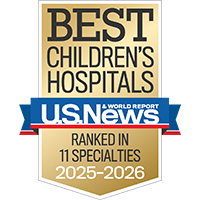Salivary gland disease

Overview
The head and neck have three sets of glands that produce saliva and release it into the mouth through ducts: the parotid glands, located in front of the ears; the submandibular glands, which are below the jaw; and the sublingual glands, underneath the tongue. Inflammation of these glands is called sialadenitis.
Diseases of the salivary glands aren't common in children. When they do have problems, it's usually due to a bacterial or viral infection. Either type can cause painful swelling of the affected glands and make eating difficult. In some cases, the parotid gland becomes chronically inflamed, a condition called juvenile recurrent parotitis (JRP). The causes of JRP remain unknown, though the condition can be associated with autoimmune diseases, such as Sjögren's disease. An infection also can occur if your child develops a stone in the salivary duct that blocks the normal flow of saliva.
Though it's rare, children can also develop growths in the salivary glands. In most cases, these tumors are benign (noncancerous).
Signs & symptoms
Possible symptoms of a salivary gland infection include:
- Pain, tenderness and redness where salivary glands are located (on the sides of the jaw or underneath the lower jaw)
- Hard swelling of the salivary gland and surrounding tissues
- Fever and chills
- Fluid that's not saliva – which may be white, yellow or brown – draining from the gland
Signs of JRP include repeated episodes of fever as well as swelling and pain in the jaw, near the ear. Usually just one side is affected, though it can occur on both sides. The length of each bout varies, from between two and seven days to as long as two or three weeks.
A lump near the ear, cheek, jaw or lip or inside the mouth can indicate a salivary gland tumor – but it bears repeating that this condition is rare in children.
Diagnosis
In many cases, especially with JRP, the diagnosis is made based on a physical exam and medical history. But your child's doctor may decide to order certain tests, including:
- Lab tests on blood and urine samples (if an autoimmune disorder is suspected).
- Imaging tests (such as an ultrasound, CT scan or MRI of the jaw and neck) to obtain detailed pictures of the salivary glands, possibly revealing a mass or stone in the salivary ducts.
- Sialoendoscopy, a procedure in which a tiny scope equipped with a camera and light is inserted into the gland to locate any stones, narrowed areas or blockages. The procedure takes a few hours and is done with patients under general anesthesia (completely asleep).
Treatment
If your child has an inflamed salivary gland, simple noninvasive measures are usually all that are needed to relieve the pain. These may include:
- Massaging the gland
- Increasing fluid intake
- Warm compresses
- Sour candy or chewing gum to stimulate saliva flow
- Over-the-counter pain medication, such as acetaminophen (Tylenol) or ibuprofen (Advil, Motrin)
- Medications that stimulate saliva flow
Antibiotics are rarely necessary.
If your child has JRP, and the frequency and severity of the episodes are increasing, the doctor may consider more aggressive treatments. These include:
- Sialoendoscopy. A tiny fiber-optic camera is used to look inside the salivary ducts for blockages and remove them. Removal may involve rinsing the ducts with saline, administering steroids or temporarily inserting a small inflatable balloon to widen the passages. Your child will be under general anesthesia (completely asleep) during the procedure. It takes a few hours, and patients can go home the same day. Recovery is quick, with most children returning to a regular diet and regular activities within a few days. (The same procedure is used to treat salivary stones.)
- Parotidectomy. surgical removal of the parotid gland.
Support services
Awards & recognition
-

Ranked among the nation's best in 11 specialties
































